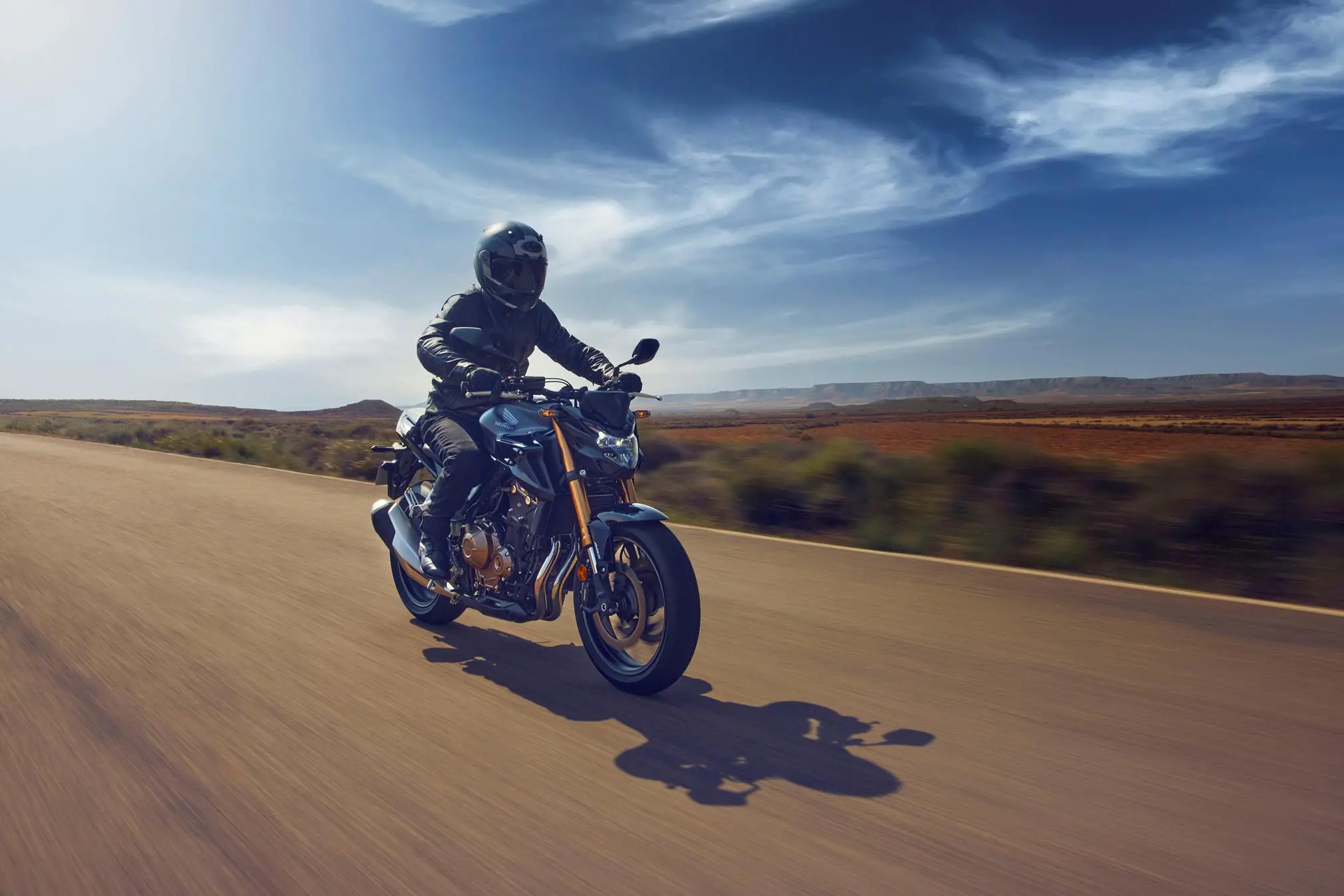Let’s face it, motorcycles have way more risks associated with riding them than cars do with driving them. Two wheels instead of four. Exposure to the elements and no protective features such as crumple zones, safety cells, or the like. The only protection you truly get is the gear that you’re wearing, which is why we here at BestBeginnerMotorcycles all follow the ATGATT tenet: All The Gear, All The Time.
However, this isn’t to say that riding is something that is 110% guaranteed to be dangerous. In fact, motorcycles can get out of many situations that a car would be completely unable to avoid, by nature of their lighter weight and faster acceleration, as well as being a fraction of the width of a car if needing to squeeze through narrow alleyways or European streets. It all comes down to being aware of when and if you should ride, being aware of everything around you, and knowing what to do when you come across road hazards, which I will go over today in detail.
The Conditional Trifecta
It might be called something else where you ride, such as the Conditional Trio or Three Conditions, but the Conditional Trifecta is a wide to narrow set of conditions that helps focus you in on if you should ride or take the bus that day. These three conditions are:
Road Condition
The first thing you need to look at before deciding to ride is what the roads are like on your planned route, or if you’re just going for a ride, what the overall road conditions look like. Where I live, in Calgary, Alberta, Canada, for the first month or so after winter, there is gravel everywhere on the roads due to sanding due to snow and ice. There have been days where it was warm, sunny, not a cloud in the sky and the roads are dry, and I haven’t ridden because the gravel had not been swept away by enough traffic yet.
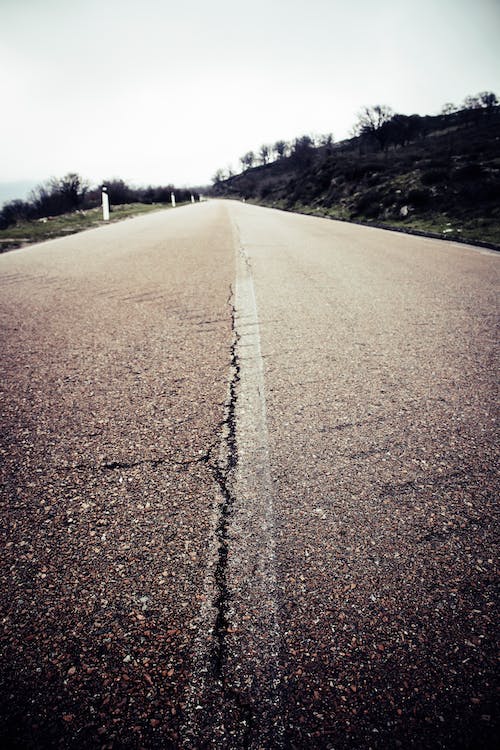
Remember, your bike is connected to the road through two tiny contact patches. Grip, quite literally, is life. Dirt, standing wander, running water, gravel, dust, sand, and more can affect how your tires grip depending on what type of tires and bike you have. Dual-sport and ADV riders have a natural advantage here through their grippy, knobbly tires, while sport and touring riders with smooth surface tires need to be extra vigilant.
Bike Condition
If the roads look good, the weather is clear, and you feel the urge to go riding, the next condition that must be met is your bike’s condition. While you should be doing a walkaround inspection every time before you swing a leg over, complacency can creep in. This isn’t pointing fingers or blaming anyone, it’s just a truth of human nature, that the more monotonous something is, the more complacent we get about it.
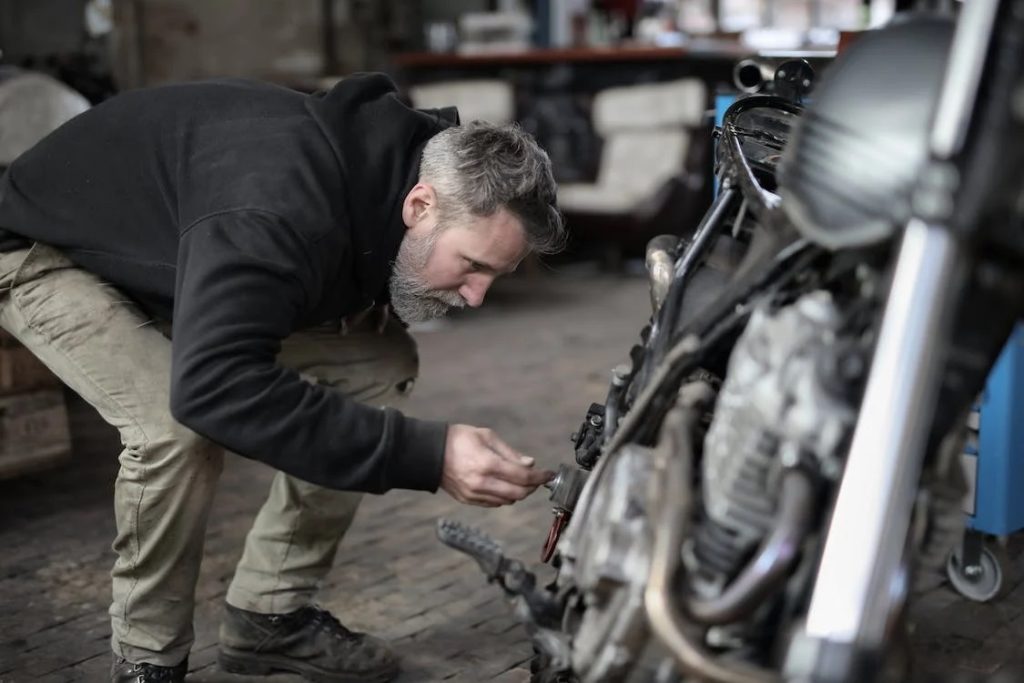
Regular maintenance can help fight that complacency and keep your bike ready to ride a lot more. Every two full tanks of gas, clean and lubricate your chain. Every month, check your chain slack and adjust it if needed. Every time you go riding, check your tire pressures and fill/bleed as needed. Check your warning lights when you start the engine to make sure the oil pressure and battery lights blink out after a few seconds. Pay attention to error messages that newer bikes can show on their TFT dashes.
If your bike doesn’t feel or seem to be in a condition to ride, there is no shame in deciding not to ride. You are, in fact, being very smart about things, as noticing something about the bike that makes you worry could very well save your life. For example, tires starting to look overly dry and cracking, or the tread is wearing thin? Ride slowly and carefully, avoiding major high speed roads, to your local bike shop and get new tires put on. It’ll be pricey, sure, but it’s better than having your rear tire blow out at freeway speeds!
Rider Condition
Perhaps the most important of all three conditions is yourself. Whenever I go to my bike after donning my gear except for my helmet and gloves, I will put the key into the ignition but not turn it until I put my helmet on. From my first week of riding, when I nearly died due to losing focus, when I don my helmet, after I do up the strap I tap the left side over my temple area twice. We each have our own little ritual that zones us in on riding, such as my riding school instructor Trevor Dech having a piece of tape on his handlebars saying “Concentrate,” but if my mind doesn’t immediately switch over to “riding mode,” as it were, or I feel distracted by the taps, suddenly tired when my mind does switch on, or anything makes me feel like I won’t be able to concentrate 100% on the ride, I don’t ride. Simple as that.

You need to be extremely honest with yourself, brutally so at times, when assessing if you are fit to go riding. Much like the engines on our bikes, if you’re not in tip-top shape, evaluate if you should ride or not. Even the common sense stuff you should go over with yourself before riding. Never ride impaired, first of all. If you’re tired and have brain fog, take a nap instead of riding, or call an Uber or take the bus. Feeling the start of a cold or feeling sick in general? Stay home, have some tea and soup, and get healthy first.
Road condition, bike condition, rider condition. Wide to narrow focus. Macro to micro, if you want to use different terminology. Only when all three conditions come back as “good” in your mental checklist… then go riding, because you will be aware, alert, and able to navigate sudden hazards and issues that may occur during your ride.
Spotting Hazardous Road Conditions
Following on from the first part of the Conditional Trifecta, that of Road Conditions, it doesn’t stop with just peeking out the window to see if it’s raining outside. Any time the wheels of your bike are turning, you should be constantly evaluating the road surface about 10 to 20 seconds ahead. But what should you be looking for?
Perhaps the three most dangerous road conditions for bikes are tar snakes, ruts, and variable debris on the road. Tar snakes are what you find in most of the Southern states, as a crack in the road may be filled and sealed with a rubbery tar mixture, instead of resurfacing the road, and when you get a whole bunch of them in a compacted area, it looks like a pit of snakes, hence the name. The big thing is, because there is no aggregate (rocks and stones) in these fill-in patches, they are much softer than asphalt and provide little to no grip.
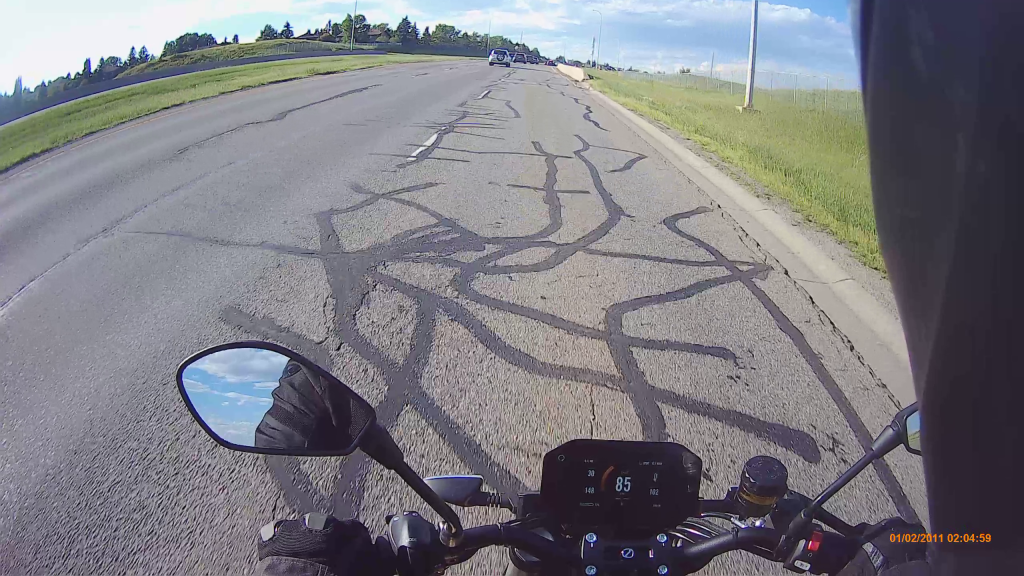
Motorcycle tires are dependent on the road surface being rugged, as the soft rubber deforms ever so slightly to fill in the gaps between the aggregate in asphalt, providing traction. Suddenly taking that traction away by running a wheel over a snake can cause the front tire to wash out, or spin up the back tire. Either one of these situations is not ideal, as both can result in you departing company with your motorcycle while at speed. If you must ride where there are tar snakes, try to avoid heavy braking, acceleration, or cornering too fast, and definitely avoid ones that run parallel to the direction your bike is pointing.
Ruts are about as dangerous, but because they cause the complete opposite effect of a tar snake. Instead of being slippery, ruts like to grab your tires and make them run down the center of the depression in the asphalt. If the rut is wide enough, it could even cause your tire to slip down into the rut. The most dangerous types of ruts are fully open cracks that are the width of a motorcycle tire, because if your front tire gets sucked into one, it could very well grab the sides of the tire and cause a very violent, sudden stop.
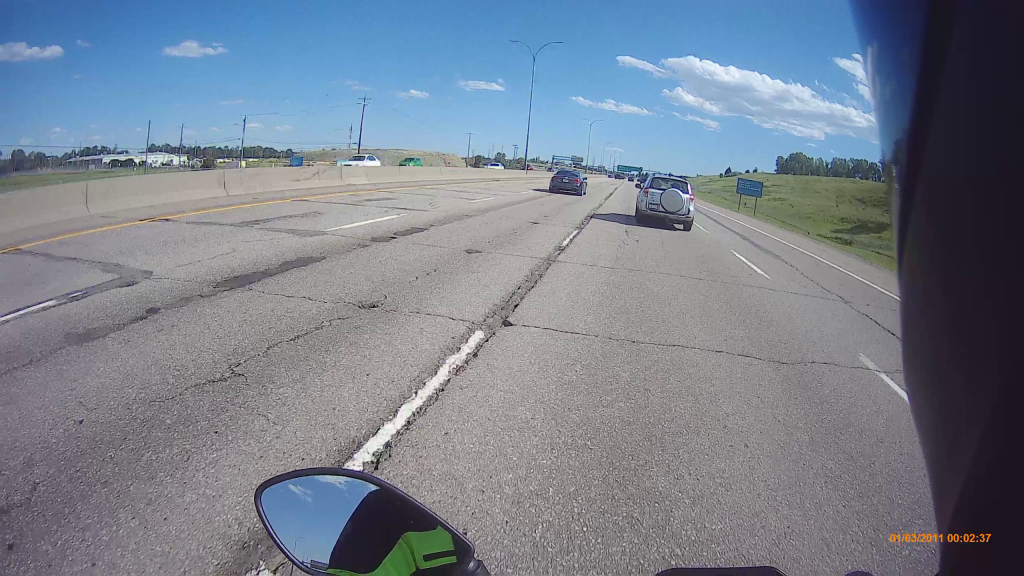
Partnering both of those hazards is the very widespread and varied types of things that can be found on the average road. Gravel, sand, little bits of wood, sometimes big bits of wood or shattered plastic and glass from a crash, and about a billion other things. These types of things are notoriously present near industrial parks and construction zones, so there is at least some forewarning of variable road conditions, usually with a “Construction Ahead” sign or by the nature of what types of businesses are in the area you’re riding.
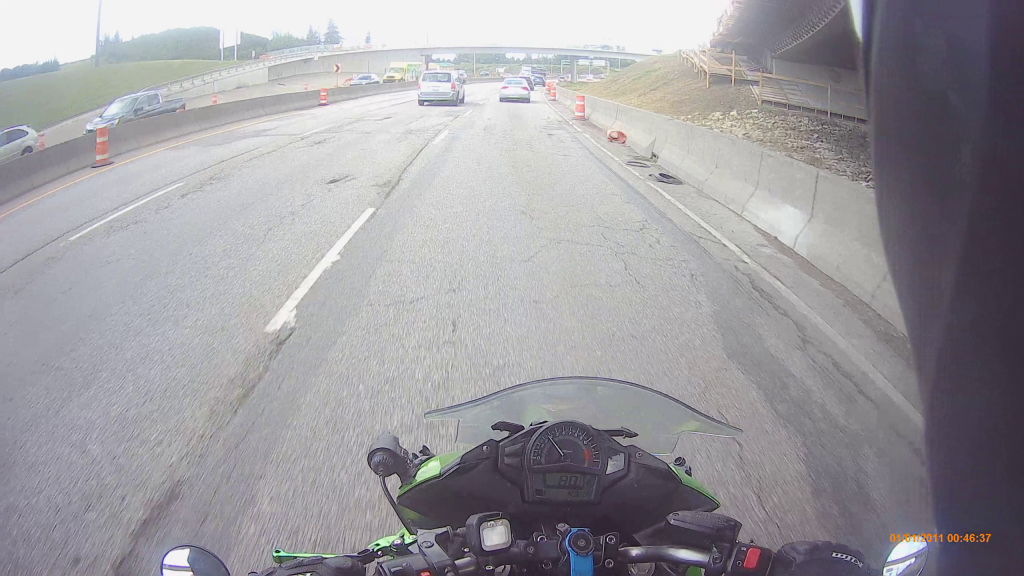
Of course, you should be constantly vigilant as you ride, and always ride with at least one escape route. That way, if you do notice a road hazard ahead, you have the space and time to do a lane change to avoid said hazard. Part of avoiding these hazards is paying attention to your route and planning to avoid areas where the hazards may be more present, but the most vital part of avoiding road hazards is to maintain constant, 360 degree situational awareness.
How To Maintain 360 Degree Awareness (Without Being Distracted)
Now that you’ve gone through the Conditional Trifecta and come back with three checkmarks, and are paying attention to road hazards to avoid, you’re out on the road riding. You may not realize it, but the instant you’re rolling down the street and looking ahead through your visor, you are already processing about 140 degrees of awareness and reacting to what you see. Brake lights, stop signs, traffic signals, changing lanes to pass a slower vehicle on the freeway. All of that is part of riding, and from the very first day of your MSF or training course, you’re already starting the process of learning how to be aware.
It’s the other 220 degrees that many don’t pay much mind to, or need to work on improving their awareness of. There is a saying among us two-wheeled enthusiasts, and that is “Scan, scan, scan.” Your horizon should be 10 to 20 seconds down the road or as far around a corner as possible, but don’t just keep your eyes dead ahead. Scan the sides of the road, the other lanes, bridges above the road, because even if you’re the only person on the road in the middle of nowhere, it doesn’t mean that an animal of some kind might suddenly emerge from the sides of the road.
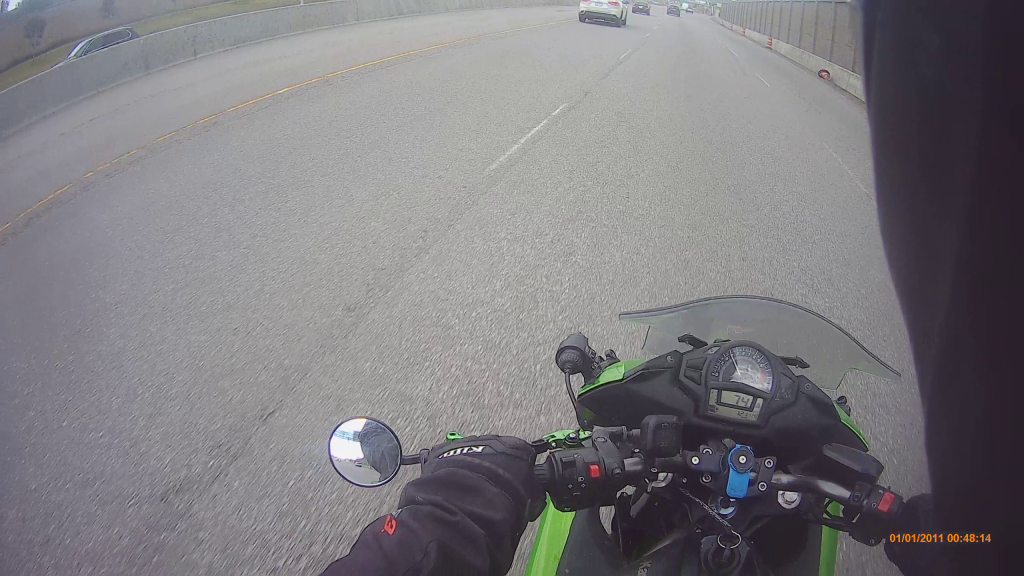
You also need to scan your mirrors, but again, as with scanning the horizon, you don’t want to focus your attention on them. A quick flick of the eyes is all your brain truly needs to get an image, and it will process that image as you return to scanning ahead. The best habit to form here is to flick your eyes to the mirror and then back ahead to the point it’s muscle memory. Once your brain learns to snapshot what it sees in the mirror and then process it while you scan the road ahead, if anything is important, believe me, your brain will let you know within milliseconds.
The hardest part of forming that habit is that your mind naturally wants to take a longer look at the mirror to get a better, more complete image of what is behind you. In a car, with four big wheels and four big brakes, if you look ahead and need to slam on the brakes, you will shed speed rapidly. On a bike, slamming on the brakes could cause you to lock the front and catapult you over the handlebars, or even tuck the front wheel and send you skidding out in a lowside.
One of the best ways to form this habit is if you and a buddy go to an empty parking lot, with one of you standing and the other riding directly away from the other. The exercise is to ride with your eyes ahead, and flick your eyes to your mirror and back forward again. Either over a comms unit or by riding back to your buddy, tell them which arm they were holding up in the air, left or right. Because you’re doing this at low speed, with no traffic ahead of you, it gives your brain the opportunity to learn how to process the snapshot it took.
Once you’re comfortable with that, and if the parking lot is big enough, you can increase speed a little, and in reaction to what your brain processes from the eye flick, lane change at your own pace to the side that your buddy had their arm raised. Practice it with a standard lane change if their arm is still, and an emergency lane change once you’ve become comfortable with standard changes after an mirror flick. This builds in the practice of noticing a hazard approaching from behind, and having the time and practice to safely get out of the way.
In sum:
- Make sure you check off all three parts of the Conditional Trifecta before riding:
- Road condition
- Bike condition
- Rider condition
- Try your best to avoid road hazards by planning your route accordingly, and when you must ride in a hazardous are, be constantly aware and vigilant
- Look to the horizon, 10 to 20 seconds down the road
- Scan, scan, scan. Lanes, cars, roadsides, bridges overhead, and let your peripheral vision see brake lights, other cars, and the like as traffic is dynamic and constantly moving
- Flick your eyes to your mirrors, don’t focus them on your mirrors. Train your brain with practice to process a snapshot image of what’s behind you, and trust that your brain can do it because it is very capable of doing so.
- Practice makes perfect, so practice, practice, practice.

